Dogs and snowshoes go together like peanut butter and jam! Snowshoeing is an excellent workout for you and your pet. Plus, exploring the winter landscape with a faithful dog at your side is a great way to strengthen your bond. But before you hit the trails with your furry friend, there are a few things to consider.
Here, we answer a few frequently asked questions about snowshoeing with dogs.

Exploring the winter landscape with a faithful dog at your side is a great way to strengthen your bond. Photo: Kevin Robers
Some of the links in this article may contain affiliate links. When you purchase using these links, part of the proceeds go to Snowshoe Mag. Additionally, as an Amazon Associate, we earn from qualifying purchases. Please see our disclosure for more details.
Will my dog enjoy this?
Let’s start with the most obvious question: is this something your dog will enjoy? Dogs most suited to snowshoeing can handle the cold and have long legs and fur that doesn’t collect ice balls.
In addition, your dog should be in good health and not overweight. Snowshoeing is a real workout, and obese dogs may not handle it. So, not all dogs are cut out for a snowy adventure. Some will be happiest staying at home.
Read More: Reap the Health Benefits of Snowshoeing
Are dogs welcome on the trails?
Know before you go. Some spaces are dog-friendly, and some are not. The way to keep the dog-friendly ones we have is to follow the rules.
Make sure that you bring Fido to places that will welcome him. You may be able to find out online, especially if you’re snowshoeing in a local, state, or natural park. You may want to call ahead of time for other areas to avoid disappointment.
Read More: Winter Trail Etiquette for Snowshoeing and Hiking
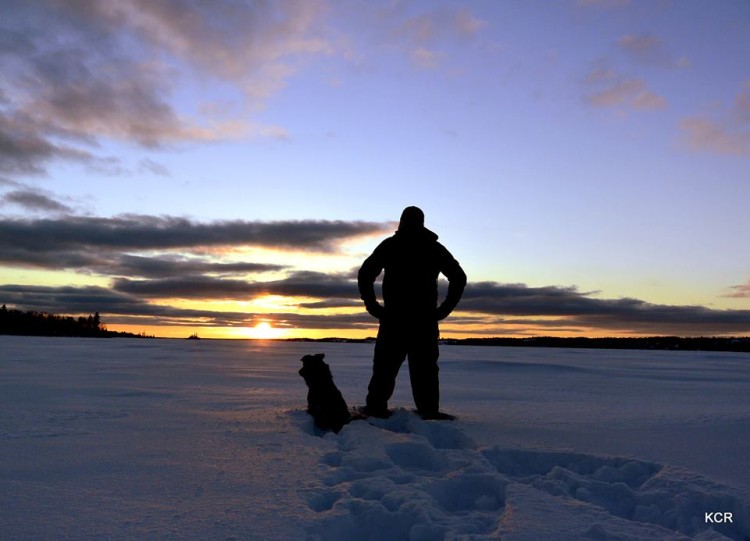
When bringing your dog with you snowshoeing, ensure that the area welcomes dogs on the trails or in the park. Photo: Kevin Robers
Does my dog need clothes?
I am not one to judge. If your dog is happiest in a sweater and boots, that’s alright with me! But, before you head on a long trip, walk through the park with your dog in their gear. Your dog must be used to wearing his new outfit. Then, if there happen to be any wardrobe malfunctions, you find out closer to home.
However, not all dog coats are created equal, and there is no one-size-fits-all option! Simply put, some dog coats are designed to appeal more to a human than be helpful to a dog. If you opt for a coat (like the Kurgo Loft Dog Jacket), check that no snow builds up against the dog’s skin. Use a coat suited to the conditions that your dog will be in during your snowshoe outing.
Read More: Kurgo Active Accessories for Four-Legged Trekkers
Does my dog need foot protection?
Taking care of your dog’s feet will help you both have a good time out there. You have a few options when it comes to canine foot care. For dogs with longer hair, have a groomer trim up the hair around the foot and between the toes. If you are attempting to do this yourself, go slow and use the proper tools. It’s all too easy to nick the webbing between the toes accidentally. Ouch!
You may also look into wax for your dog’s paws. There are many brands of paw wax (like Primens Dog Paw Balm) that you can buy online, at a pet store, or through a mushing supply company. The wax serves to keep the feet conditioned, helping to prevent cracks. The wax also stops ice balls from forming between the toes.
Boots are another option, especially if you notice your dog exhibiting discomfort, such as lifting their paws strangely. A properly fitting boot must stay on and allow the dog to spread their toes to grip as they walk. A boot with a hole is worse than no boot, as ice will form in the boot against the dog’s skin. If you opt for booties, often stop and do regular inspections.
Read More: Snowshoeing Footwear: Tips for Choosing Your Boot

A properly fitting boot must stay on and allow the dog to spread their toes to grip as they walk. Also, make sure to stop often for regular bootie inspections. Photo: Kevin Roberts
Do I need to always leash my dog?
Regardless of how well-behaved your dog is, you will need a leash if you are on public land. Not only does a leash ensure the safety of your dog and any wildlife you may encounter, but it also puts other trail users at ease who may not be comfortable around off-leash dogs.
In my opinion, though, hands-free is simply the way to be! When snowshoeing on public land, I enjoy using a trekking belt (like the Howling Dog Alaska Trekking Belt). It goes around my waist and attaches to the dogs, leaving my hands free to manage my poles and camera.
Read More: Gear Review: Howling Dog Alaska Trekking Package
How should I clean up after my dog?
A backpack or Indiana Jones-style satchel is a great way to pack out dog poop. However, be sure to double-bag it, just in case. Even better would be to train your dog to go to the bathroom before you hit the trail. This tip is especially true if space in your pack is limited or you have multiple dogs.
Remember, if your dog goes on the trail, you got to stoop and scoop. It’s not cool to bend and pretend.
Read More: Leave No Trace Principles for Snowshoers
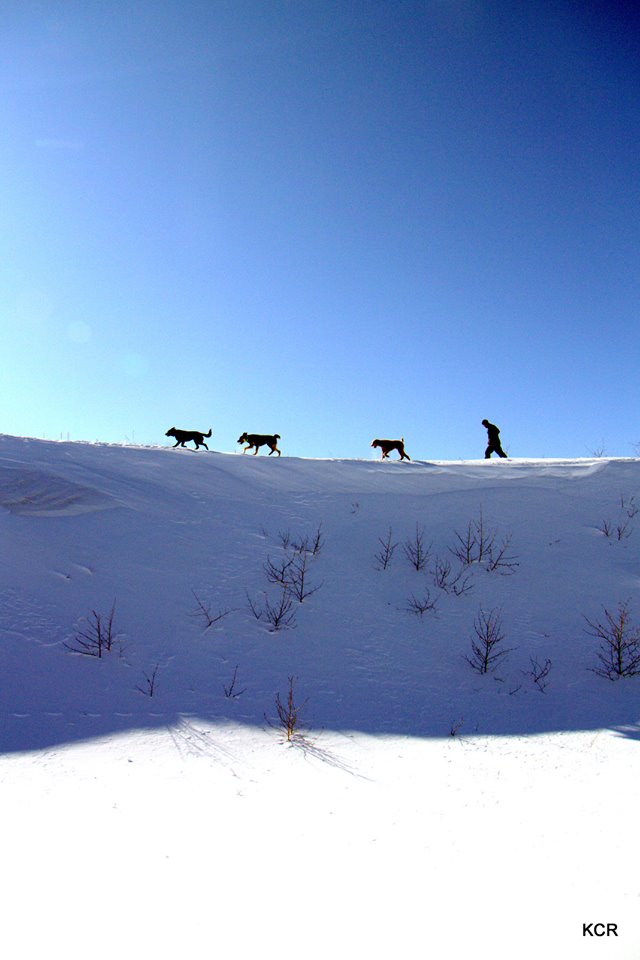
Before you hit the trail, have your dog go to the bathroom before you head out. This tip is beneficial if space in your pack is limited or you have multiple dogs. Photo: Kevin Roberts
How far / long should I go snowshoeing with my dog?
Snowshoes give you a considerable edge in the deep stuff. An advantage your dog may not have! In powder, Bowser will have to work harder to keep up.
Keep this in mind, and monitor your dog’s energy level. It’s going to be no fun to have to carry your dog out. So if your dog is new to snowshoeing, start slow and build up their stamina.
Read More: Snowshoeing with a Dalmation
Should I bring food for my dog?
Your dog will be burning plenty of calories and maybe even getting dehydrated. So pack a snack or some baited water (think of a doggie soup) for them to replenish their energy. Look for a snack high in fat and protein to give your dog the energy they need right away and aid in their muscle recovery.
My dogs love a little bit of beef fat melted in a thermos of warm water. It’s easy to carry snacks, which gives them an energy boost and keeps them hydrated. When it’s freezing out, I carry the thermos upside down so the lid doesn’t freeze.
Foods such as peanut butter and fish have the added benefit of giving your dog dietary zinc, which will help with his coat, and paws.
Read More: Snowshoeing Snacks and Nutrition Tips for Your Next Outing
Have fun snowshoeing with your dog!
Making sure that your dog is prepped and ready for the trails ensures that you both will have a great experience. Happy trails to you and your dog!
What other recommendations or questions do you have about snowshoeing with your dog? Please share your thoughts with us in the comments below.
This article was first published on November 24, 2014, and was most recently updated on November 29, 2022.
Read Next: Benefits and Tips for Snowshoeing With Pets


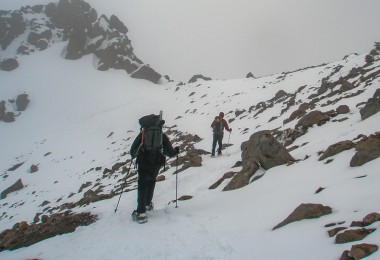
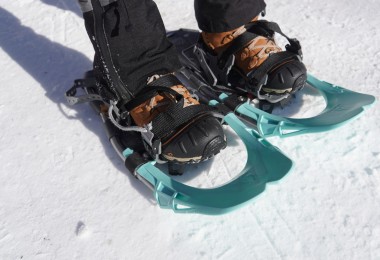
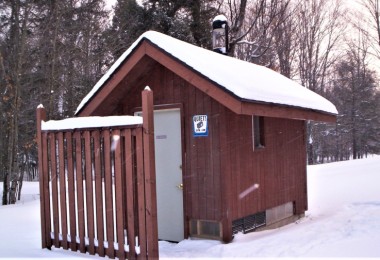


wonderful article! can’t wait to get out there! (come on, snow!)… did I really say that?